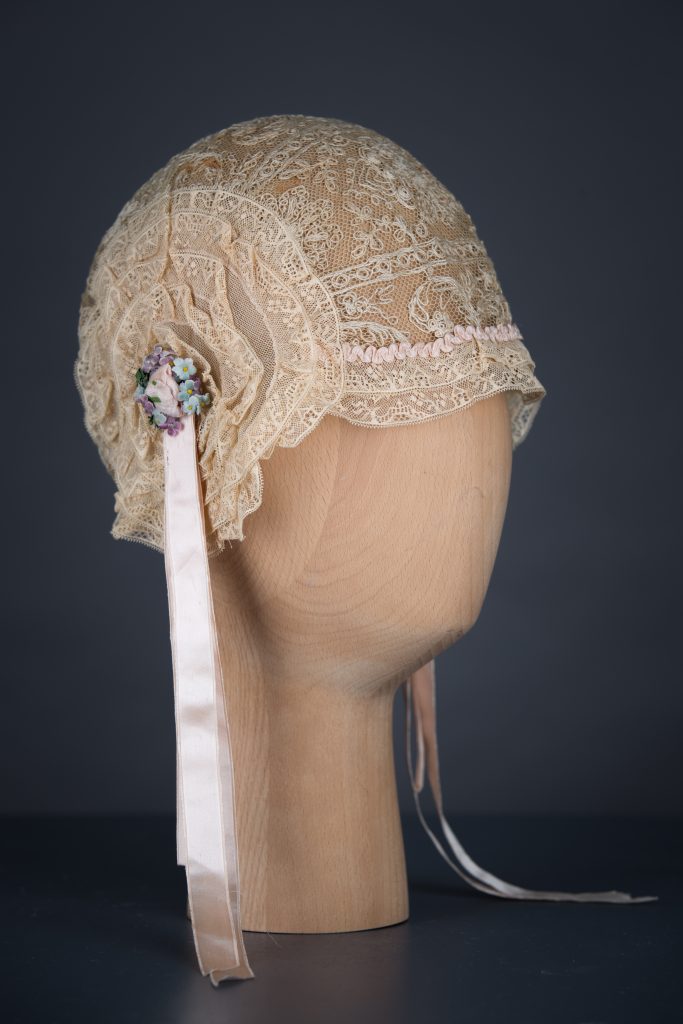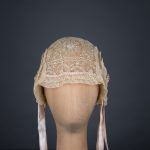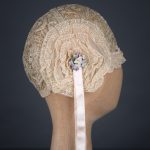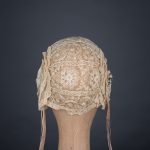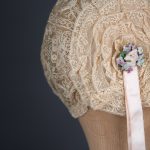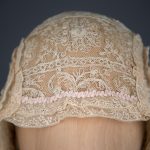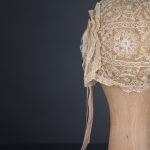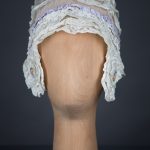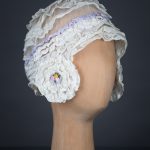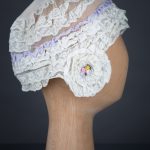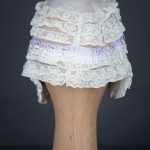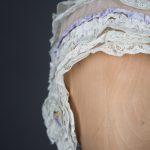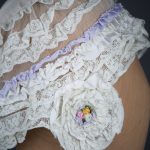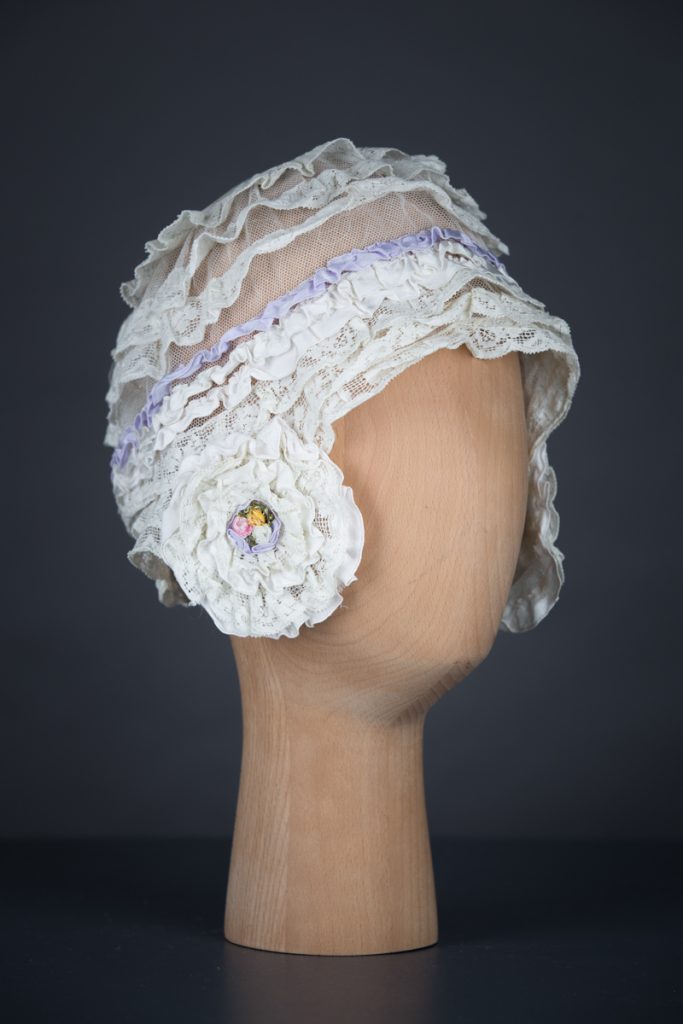The overarching trend in women’s undergarments in the early twentieth-century was towards ever-greater exposure of the skin, even ‘skin worship’ as a new religion (Cunnington, 134). Boudoir caps do not follow this direction. Instead of exposing an erotically charged part of the female body, the hair, they cover it up. The first element of the boudoir cap’s carefully crafted yet contained sex appeal is its connection to a woman’s hair. In 1926 the Times of India claimed that the ribbons hanging down the back of a particular boudoir cap “are guaranteed to create the feeling of the long hair which women once grew on their heads.”. They concluded that “Long ribbon tresses on boudoir caps are one of the latest feminine dodges for imitating long hair.” (The Times of India, 30 Oct 1926, 21). Other elements of the decorations of a boudoir cap can also be taken to imitate women’s hair styles. Lace ruffles around the face, especially the puff-like shape near the ears, bear resemblance to contemporary hair trends like kiss curls. Using lace and ribbon to create stylised hair appears not so unusual if one remembers other 1920s headwear that emulates the look of waved hair like raffia wigs or certain styles of evening hats which sport waved lines all round, giving the appearance of drawn on marcel-waves.
Chapter Six: Stylised Hair
Lace Ruffle & Floral Rosette Boudoir Cap
Date: c. 1920s
Origin: United States
Fabric: Embroidered tulle, lace, silk ribbon
Brand: Custom made
A boudoir cap made with a base of varying weights of bobbinet tulle. The thicker of the tulles is used as a base of profuse hand embroidery that covers the majority of the cap, with a seam across the horizontal centre of the cap. A finer weight of tulle is used on round panels on either side.
Both side panels are embellished with 5 circular layers of ruched, fine, leavers lace, finished with a cluster of velvet flowers and silk ribbon streamers. The back hem is trimmed with a single layer of ruched leavers lace. The front hem of the cap has two layers of the lace, with a layer of ruched silk ribbonwork. The garment is largely sewn by hand, with the exception of the lace trims and side panels, that appear to have been attached by machine.
Other types of headwear have also been taken to represent hair. De Courtais for example considers a bridal veil to be “a substitute for flowing hair, the centuries-old symbol of virginity” (De Courtais, 176). Ofek establishes female hair as the most common fetish of the nineteenth- century and argues for the great importance of long, groomed hair in the middle-class ideal of femininity (Ofek, 17). As the fashion for bobbed hair had literally significantly reduced this symbolical part of a woman’s body, it makes sense that the erotic value of hair was transferred to an artificial version of it. Here, the boudoir cap is again able to maintain older elements of sex appeal by imitating the look of longer, dressed hair.
Cotton Leavers Lace Ruffle & Tulle Boudoir Cap With Silk Ribbonwork
Date: c.1920s
Origin: Great Britain
Fabric: Tulle
Brand: Custom made
This boudoir cap has a base of white cotton bobbinet tulle which has been elaborately decorated with ruffles of leavers lace trim and silk ribbon. The crown of the cap is made of a pale pink silk crêpe. The cap extends over the ears, with large rosettes made from silk ribbon, lace trim and ribbonwork flowers.
Navigation
Chapter One: Introduction & The Boudoir Cap’s Predecessors
Chapter Two: A Rite Of Passage Into Adulthood
Chapter Three: Glamour For All
Chapter Four: An Affordable And Attainable Way Of Achieving The Boudoir
Chapter Five: A Safe Version Of Sex Appeal
Chapter Seven: Dress For Undressing
